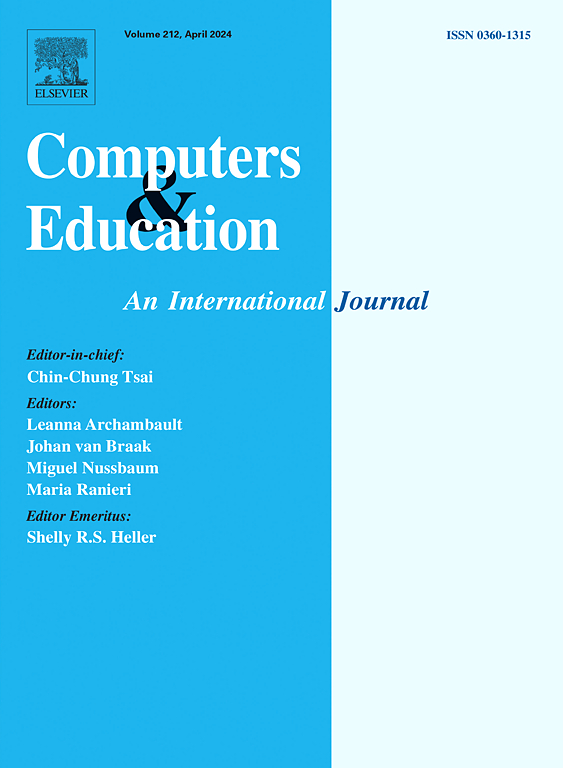Measuring undergraduate students' reliance on Generative AI during problem-solving: Scale development and validation
IF 10.5
1区 教育学
Q1 COMPUTER SCIENCE, INTERDISCIPLINARY APPLICATIONS
引用次数: 0
Abstract
Reliance on AI describes the behavioral patterns of when and how individuals depend on AI suggestions, and appropriate reliance patterns are necessary to achieve effective human-AI collaboration. Traditional measures often link reliance to decision-making outcomes, which may not be suitable for complex problem-solving tasks where outcomes are not binary (i.e., correct or incorrect) or immediately clear. Therefore, this study aims to develop a scale to measure undergraduate students' behaviors of using Generative AI during problem-solving tasks without directly linking them to specific outcomes. We conducted an exploratory factor analysis on 800 responses collected after students finished one problem-solving activity, which revealed four distinct factors: reflective use, cautious use, thoughtless use, and collaborative use. The overall scale has reached sufficient internal reliability (Cronbach's alpha = .84). Two confirmatory factor analyses (CFAs) were conducted to validate the factors using the remaining 730 responses from this activity and 1173 responses from another problem-solving activity. CFA indices showed adequate model fit for data from both problem-solving tasks, suggesting that the scale can be applied to various human-AI problem-solving tasks. This study offers a validated scale to measure students' reliance behaviors in different human-AI problem-solving activities and provides implications for educators to responsively integrate Generative AI in higher education.
测量大学生在解决问题时对生成式人工智能的依赖:规模开发和验证
对人工智能的依赖描述了个体何时以及如何依赖人工智能建议的行为模式,适当的依赖模式是实现有效的人类与人工智能协作所必需的。传统的衡量标准通常将依赖与决策结果联系起来,这可能不适合复杂的问题解决任务,因为结果不是二元的(即,正确或不正确)或立即清晰。因此,本研究旨在开发一个量表来衡量本科生在解决问题任务中使用生成式人工智能的行为,而不直接将其与具体结果联系起来。我们对学生完成一次问题解决活动后收集到的800份反馈进行了探索性因素分析,发现四个不同的因素:反思使用、谨慎使用、轻率使用和协作使用。整体量表达到足够的内部信度(Cronbach’s alpha = .84)。两个验证性因子分析(CFAs)使用来自该活动的剩余730个响应和来自另一个问题解决活动的1173个响应来验证因子。CFA指数对两个问题解决任务的数据显示了足够的模型拟合,这表明该量表可以应用于各种人类-人工智能问题解决任务。本研究提供了一个有效的量表来衡量学生在不同的人类-人工智能问题解决活动中的依赖行为,并为教育工作者在高等教育中响应性地整合生成式人工智能提供了启示。
本文章由计算机程序翻译,如有差异,请以英文原文为准。
求助全文
约1分钟内获得全文
求助全文
来源期刊

Computers & Education
工程技术-计算机:跨学科应用
CiteScore
27.10
自引率
5.80%
发文量
204
审稿时长
42 days
期刊介绍:
Computers & Education seeks to advance understanding of how digital technology can improve education by publishing high-quality research that expands both theory and practice. The journal welcomes research papers exploring the pedagogical applications of digital technology, with a focus broad enough to appeal to the wider education community.
 求助内容:
求助内容: 应助结果提醒方式:
应助结果提醒方式:


